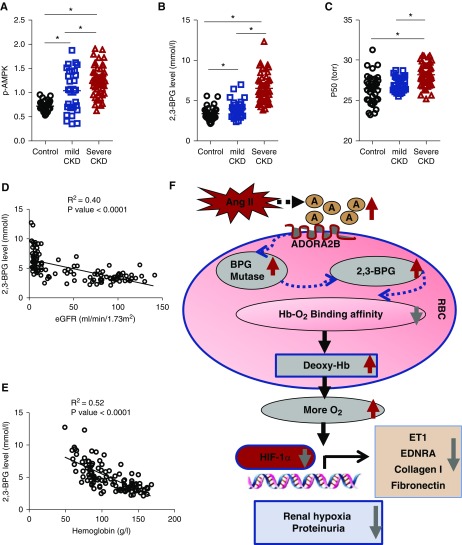Figure 6.
Erythrocyte AMP-activated protein kinase (AMPK), 2,3-biphosphoglycerate (2,3-BPG), and the partial pressure of oxygen to allow 50% of hemoglobin binding to oxygen (P50) are elevated and correlated with disease severity in patients with CKD. (A–C) Erythrocyte AMPK, 2,3-BPG level, and P50 are elevated in patients with CKD. (A) Phosphorylated AMP-activated protein kinase (p-AMPK) activity, (B) 2,3-BPG levels, and (C) P50 in normal individuals (n=35), patients with mild CKD (n=29), and patients with severe CKD (n=48). Data are expressed as mean ± SEM. *P<0.05. (D) The linear correlations between 2,3-BPG and eGFR in normal individuals and patients with CKD. (E) The linear correlations between 2,3-BPG and hemoglobin in normal individuals and patients with CKD. (F) Working model of a beneficial role of the erythrocyte adenosine ADORA2B-AMPK signaling cascade in counteracting angiotensin II (Ang II)–induced renal hypoxia, injury, and CKD progression. ET1, endothelin-1; HIF-1α, hypoxia-inducible factor-1α; O2, oxygen; RBC, red blood cell.

